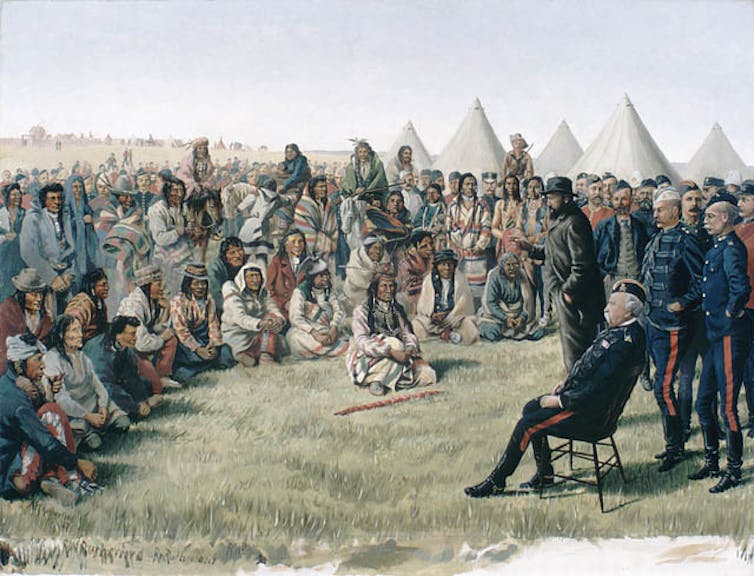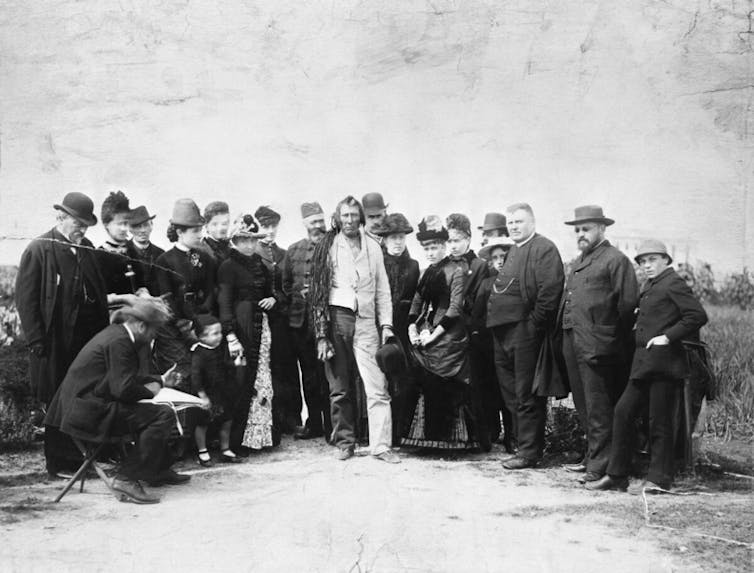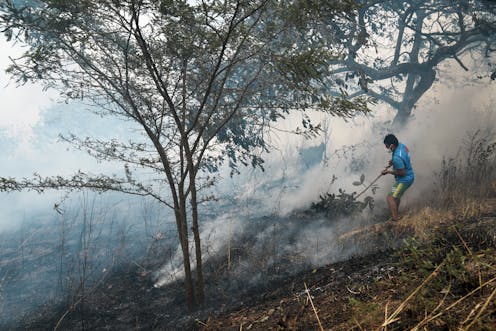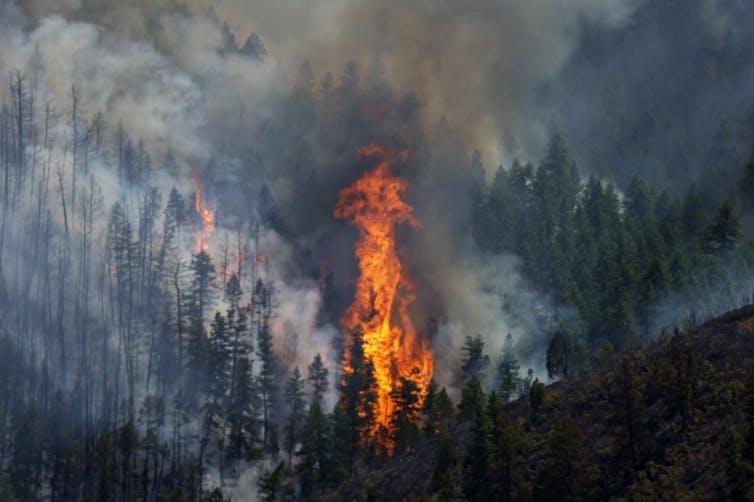Source: The Conversation – UK – By Sam Phelps, Commissioning Editor, International Affairs, The Conversation
This article was first published in The Conversation UK’s World Affairs Briefing email newsletter. Sign up to receive weekly analysis of the latest developments in international relations, direct to your inbox.
The next phase of the war in Gaza has begun. Israel’s military is carrying out the early stages of an assault to capture Gaza City, with 60,000 reserve troops expected to be called up for the offensive. Hundreds of thousands of Palestinians will evacuate south.
World leaders have condemned the assault. The French president, Emmanuel Macron, said it “risks plunging the entire region into a cycle of permanent war”. Belgium’s foreign ministry added it would “lead to more death, destruction and mass displacement”.
These developments come days after Hamas officials accepted a new ceasefire proposal to pause the war. The offensive scuppers any hopes of such a deal moving forward, says Julie Norman of University College London.
Norman, associate professor in politics and international relations, sees this as an all-too familiar situation. Hamas has responded positively to various ceasefire proposals over the past year that have subsequently broken down.
Beyond a ceasefire, the two warring parties also remain far apart on what “ending the war” actually includes. There are major sticking points around the disarmament of Hamas and Israel’s intention to maintain “security control” in Gaza after the war.
So don’t expect the violence to end anytime soon, writes Norman. As one Israeli reservist told her during a recent trip to the region: “Last year at this time, I didn’t imagine there could possibly be another year of war. Now, it’s hard to imagine there not still being a war in another year from now.”
Read more:
No end to the violence as Israel launches its assault on Gaza City
The Israeli government has meanwhile approved the construction of a new settlement in the West Bank, comprised of about 3,500 new dwellings. Leonie Fleischmann, senior lecturer in international politics at City St George’s, University of London, lays out why the plan is particularly controversial.
She writes that the settlement’s construction, deemed illegal under international law, “would cut the West Bank into two separate parts, rendering it impossible to establish a contiguous Palestinian state with East Jerusalem as its capital”.
This certainly seems to be the intention of the Israeli government. Bezalel Smotrich, Israel’s hard-line finance minister, declared that the approval of construction plans “buries the idea of a Palestinian state”. He added: “Every town, every neighbourhood, every housing unit is another nail in the coffin of this dangerous idea”.
Read more:
Israel’s plan for massive new West Bank settlement would make a Palestinian state impossible
Trump the peacemaker?
Elsewhere, we have interrogated Donald Trump’s claim that he resolved six conflicts in a matter of months. We interviewed six experts on those regions to find out what Trump actually did, and whether it made a difference.
Some of Trump’s claims hold up, to an extent. In the case of Thailand and Cambodia, for example, his threat to suspend trade talks with both countries was the breakthrough that paused hostilities.
His mediation between Armenia and Azerbaijan has also resulted in the warring countries coming together to agree a possible pathway to peace after decades of conflict. But our experts were unanimous in their verdict that, ultimately, Trump’s claim doesn’t fully stand up.
Read more:
Did Trump really resolve six conflicts in a matter of months? We spoke to the experts to find out
One war Trump cannot claim to have solved is in Ukraine, which was the focus of two high-stakes summits over the past week. The first saw Trump roll out the red carpet for Vladimir Putin in Alaska. He signalled afterwards that the pair had discussed Ukraine ceding land to Russia in order to end the war.
Trump then met with Ukrainian president Volodymyr Zelensky and the leaders of some of Ukraine’s European allies at the White House a few days later. Zelensky will have left this hurriedly arranged meeting feeling a sense of relief.
There seems to have been no real pressure put on Ukraine to give land to Russia, and Trump even appeared to accept the European position that security guarantees for Kyiv will be vital if any peace deal is to stick. But the results of this meeting were still far from perfect, says Stefan Wolff.
Wolff, professor of international security at the University of Birmingham and a regular contributor to this newsletter, explains that Trump is hailing the fact that a direct meeting between Putin and Zelensky has not been ruled out as a major success of the past week’s diplomatic efforts.
However, as Wolff notes, a peace process remaining somewhat intact is a far cry from an actual peace agreement. Even then, he says, any further progress towards peace is likely to happen at a snail’s pace. Russia already looks to be dragging its feet.
Putin reportedly suggested to Trump that Zelensky could travel to Moscow for talks. This is an option Kyiv could not possibly have agreed to. Meanwhile, Russian foreign minister Sergei Lavrov has watered down hopes of any such meeting taking place, saying it would have to be prepared “gradually”.
Read more:
Transatlantic unity at the White House disguises lack of progress towards just peace for Ukraine
Security guarantees
Equally unclear are the details of security guarantees for Ukraine. Zelensky has praised Trump’s indication that the US is ready to be part of that guarantee, and says he hopes it will be “formalised in some way in the next week or ten days”. But what are the options?
One proposal includes western allies offering Ukraine what Italy’s prime minister, Giorgia Meloni, has called an “article 5-style” protection. We spoke to Mark Webber, professor of international politics also at the University of Birmingham, about what that means.
As Webber writes, Meloni was alluding to Nato’s collective defence pledge that treats an attack on one member as an attack on all. However, the route to an article 5 security guarantee through Ukrainian membership of Nato has been expressly ruled out by the Trump administration, he says.
A much more likely option is that Europeans will be “the first line of defence”, with the US instead offering intelligence, weapons and air support of some kind. Trump was clear there would be no US “boots on the ground”, writes Webber.
In any case, it remains doubtful whether a security guarantee for Ukraine can be reached. Lavrov has said discussing security guarantees without Russia’s involvement “is a road to nowhere”. He has since said proposals to deploy European troops in Ukraine would be unacceptable for Russia. In the meantime, Russia’s advance in eastern Ukraine continues to gather momentum.
Read more:
Ukraine war: what an ‘article 5-style’ security guarantee might look like
It’s from eastern Ukraine that Frank Ledwidge, a military strategist at the University of Portsmouth, has just returned from a week-long trip. He has provided this account of daily life in Ukraine’s eastern capital, Kharkiv, where air-raid sirens sound at all hours but shopping malls remain busy and bars lively.
Despite all this, Ledwidge notes, there was an abiding sense of emptiness in what has come to be known as Ukraine’s “unbreakable city”. No official figures are available, but Ledwidge estimates that more than half of Kharkiv’s pre-war population of 1.5 million have left since the war began in 2022. Many of these people may never return.
Read more:
Kharkiv: what I saw in Ukraine’s ‘unbreakable’ eastern capital
Sign up to receive our weekly World Affairs Briefing newsletter from The Conversation UK. Every Thursday we’ll bring you expert analysis of the big stories in international relations.
![]()
– ref. Israel opens new front in Gaza war – https://theconversation.com/israel-opens-new-front-in-gaza-war-263484
















